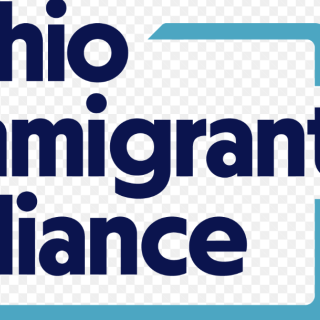Advertisement
A group calling itself the Columbus Coalition on Rent Control filed a petition this week with the city to officially begin a citizen-led ballot initiative which would create a rent control ordinance and establish a new city office named the Department of Fair Housing.
While the petition for rent control or rent stabilization may not be a first for the state of Ohio, this would be Ohio’s first-ever rent control ordinance if the citizen initiative were to win at the ballot.
The Columbus Coalition on Rent Control is driven by several well-known progressive and political activists, such as Jonathan Beard, Joe Motil, Tyrone Thomas, and Noel Williams, Chair of the housing committee for B.R.E.A.D, the local faith-based activist group.
Seemingly overnight, the cost of housing in Columbus went from relatively affordable to now putting tens of thousands under extreme pressure to keep a roof over their family’s heads.
Affordable housing is at an impasse nationwide, but many believe Columbus, while late compared to other major cities, is now staring a homeless and affordable housing crisis in the face.
Thus, the Columbus Coalition on Rent Control this past Saturday at the Main Library told an audience that someone has to put the brakes on the skyrocketing cost of rent.
“We’re taking it in our own hands to move forward with this,” said Beard during the meeting. “Most of us here are Black. So let’s talk about affordable housing – it means you are spending no more than 30 percent of your income on housing…and many [African-Americans] in Columbus have much lower incomes than the [median] average.”
The Coalition will need signatures from five percent of the number of people who voted in the last mayoral election to make it on the ballot, or roughly 7,500 to 8,000 signatures. Beard said they are targeting the May primary of 2023, and if it wins, rent control beginning January 1, 2025.
According to the Coalition, their rent control ordinance would set base rent at what rent cost on January 1, 2020, and can only be increased once per year in accordance with Franklin County wages as reported to the Department of Labor or Social Security COLA for the elderly and disabled. Landlords would have to report what they were charging tenants on the first of January 2020 to the proposed Department of Fair Housing.
There are close to 400,000 housing units in Columbus with 55 percent renter occupied, as renters make up 47 percent of the Columbus population. Many units will be exempt from the Coalition’s ordinance, such as subsidized housing, dormitories, and units built during the previous 15 years. The Coalition expects 114,000 units to be eligible for rent control.
The Coalition’s initiative would also create within the Department of Fair Housing a 21-member Fair Housing Commission of housing advocates who would provide guidance and approve policies. Also proposed is a Division of Tenant Rights and Responsibilities, and an Inspector General who would investigate allegations of noncompliance on the part of landlords.
The Coalition believes there must be some government oversight for the ordinance to be a success.
“We’ve studied a lot of different rent control policies in the country, and unfortunately there has to be a bureaucracy,” said Joe Motil during the meeting, referring to the potential Department of Fair Housing. “We have to cover everything. What’s legal and what’s not legal. We have to satisfy investors and developers, as well as tenants so to make everybody happy. We have to come to a compromise and a happy medium for everybody as much as we can.”
Motil and many others believe a major factor behind Columbus’s housing affordability crisis is how the Mayor’s Office and City Council have cowed to developers who are building properties that mostly target one type of person – young professionals.
“It’s almost like the labor base for corporate Columbus,” said Motil in a previous interview with the Free Press. “That’s what the housing is for. It’s for them. It’s white-collar kids, young people, 20 to 45-years old. Forty-four percent of the population of Columbus ranges between 20 and 45 years of age.
“The properties are getting more expensive to buy, rent’s going up. And these people that are living there are getting run out.”
Fueling the Columbus urban gentrification movement are tax abatements for developers.
“They give a developer a tax break for 15 years, and they say, ‘You have to set aside ten percent of your units for 80 percent of AMI (Area Median Income) and ten percent of 100 percent AMI.’ 80 percent AMI is $47,000 annual salary and 100 percent AMI is $58,700,” said Motil.
The average Black income level in Columbus is roughly $35,000, adds Motil
“It’s discrimination right off the bat.”
During the meeting at the Main Library, the Free Press asked Beard how he thought the Mayor’s Office and City Council would respond to this citizen-driven initiative?
“There’s going to be fierce opposition. They will put a lot of money into the opposition. They will denigrate people involved with it. If they can touch your business or whatever, they will try to do it,” said Beard.
Motil says the Mayor’s Office and City Council will tell the community “This is bad for everybody.”
“In one way or another, they will find a million reasons why it’s bad. Like this ‘will actually raise the price of rent,’” he said



